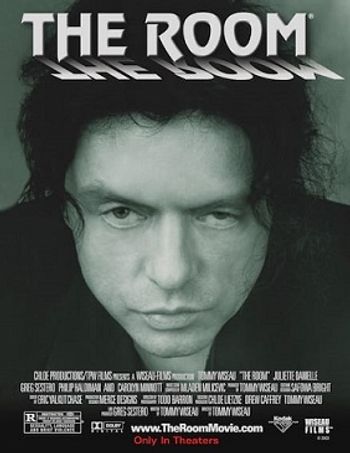
- Psychiatric Times Vol 27 No 1
- Volume 27
- Issue 1
Cultural and Ethnic Issues in Psychopharmacology
Since the inception of the modern era of psychopharmacology, psychotropics have been the mainstay of the care of psychiatric patients all over the world, irrespective of their cultural and ethnic backgrounds. Until recently, however, variations in treatment response across populations, including effectiveness, dosing strategies, and adverse-effect profiles, have received minimal attention.
Since the inception of the modern era of psychopharmacology, psychotropics have been the mainstay of the care of psychiatric patients all over the world, irrespective of their cultural and ethnic backgrounds. Until recently, however, variations in treatment response across populations, including effectiveness, dosing strategies, and adverse-effect profiles, have received minimal attention.1,2
Psychopharmacological research in general and randomized controlled trials in particular have been conducted largely in North America and Western Europe and have rarely included persons of ethnic minority or cross-cultural backgrounds.3 This, in part, reflects the asymmetrical distribution of resources and the “Eurocentric” slant of the research establishment. Responsibility for such biases also lies in deeply rooted beliefs and assumptions that suggest that treatment responses are predominantly determined by biological mechanisms and that biological processes are universally applicable and thus color- and culture-free.
In contrast, there have been remarkable changes in the past 3 decades in the documentation of often substantial variations in drug responses across cultural and eth-nic groups and in the delineation of mechanisms responsible for the variations.4,5 These findings have profound clinical and theoretical import, and it is important that they not be simplistically interpreted. As is true with all social and biological phenomena (eg, height, weight, temperament, child-rearing practices), drug response characteristics are normally distributed so that between-group differences are always accompanied by overlaps at the individual level.
Remarkable interindividual and intracultural variations coexist with ethnic/cultural differences. That is, while the majority of members of a population group fall on one side of the distribution, and those of another group on the other side, there are always exceptions. Neglect of such overlaps may lead to overgeneralization of research findings, which, in turn, could contribute to cultural stereotyping and consequent stigmatization.
For example, there are substantive ethnic variations in haloperidol metabolism between Asians and whites.6 At the same time, equally extensive interindividual variations within each of the ethnic groups also have been seen, resulting in significant overlap between the 2 groups.
This article reviews the cultural and biological aspects of drug effects and the role of interindividual, cross-ethnic, and genetic variations as well as environmental factors on treatment response.
Cultural aspects of drug effects
For the purposes of clarity in discussion, materials and opinions included in this article are presented with concepts that are commonly regarded as dichotomous in nature, such as culture and biology, as well as the “instrumental” versus “symbolic” aspects of pharmacological responses. In reality, increasing evidence indicates that such divisions are artificial and potentially misleading. In many instances, culture and biology clearly interact with and influence each other, as do medications’ “instrumental” (biological, pharmacological) and “symbolic” (nonbiological) effects. For example, drug-induced sedation may be regarded by one patient as a positive sign that suggests that the medication is beginning to work. For another patient, it may be an alarming sign of symptomatic worsening or a harbinger of medication toxicity. Such interpretations, based on individual beliefs that have been shaped largely by cultural and personal backgrounds, serve to further influence subsequent treatment response.
Keeping these caveats in mind, one of the most important issues that should be emphasized in any pharmacotherapeutic endeavor is that, however defined, the power of the symbolic aspect of treatment response typically outweighs instrumental effects of medications. It is for this reason that double-blind, randomized controlled trials are indispensable for the evaluation of the effectiveness of any intervention. In most clinical trials, placebo effects are seen in 30% to 50% of participants. New drugs usually need to show an additional 10% to 20% efficacy over placebo response to be approved for marketing and clinical use.
Placebo effects are largely determined by the patient’s expectations and beliefs, which are not only responsible for most of the therapeutic effects of treatment but can also lead to significant adverse effects.
The power of placebo response, mediated via symbolic mechanisms, is generally believed to be the basis for the popularity and effectiveness of most indigenous healing practices and alternative-treatment approaches. Thus, even if their instrumental properties are minimal as generally assumed, they could still provide therapeutic benefits that are substantive and at times dramatic. Embedded in patients’ sociocultural milieus, and often congruent with their beliefs and views on health and illness, such healing practices foster hope and expectations of recovery, thereby maximizing placebo response. Contrary to general belief, placebo responses are often accompanied by physiological changes (eg, changes in blood pressure, neurohormonal levels, brain imaging characteristics) that are indistinguishable from those seen with active pharmacological agents.7
In contrast, contemporary biomedical practices typically focus exclusively on the instrumental aspects of pharmacological effects. By downplaying or minimizing the symbolic aspect of medication effects and by regarding placebo responses as unreal and perhaps unworthy of scientific attention, clinicians can miss the opportunity to garner the power of the most important therapeutic element in patient care, which may not be easily compensated by their scientifically based professional knowledge and technical prowess.
To maximize therapeutic responses, general agreement in the expectations and beliefs between clinicians and patients is crucial. Without such agreement, it is hard to establish trust and to foster a trajectory for the anticipation of improvement. Where health beliefs diverge-as often is the case between Western-trained clinicians and patients imbued with traditional concepts of health and illness (which are surprisingly common and tenacious, even among the highly educated)-the treatment offered is not likely to be useful, no matter how powerful the instrumental effects are of a medication. In this sense alone, ignorance or neglect of patients’ culturally shaped health beliefs and expectations often guarantees therapeutic failure.
Equally or perhaps more important is that mismatches in beliefs and expectations between clinicians and patients often lead to a breakdown of clinician-patient communication, as well as treatment discontinuation and nonadherence.8 Even in situations where cultural differences between clinicians and their patients are not obvious, medication nonadherence is often highly prevalent. In patients with chronic conditions (eg, diabetes, hypertension, and most psychiatric disorders) who require long-term medication use, the rate of nonadherence could be expected to exceed 50%.9 When compounded by cultural communication gaps, as is often the case when patients of ethnic minority or cross-cultural backgrounds enter treatment programs, failure in medication adherence could be expected to be the norm rather than the exception.
The principles for bridging these gaps, for minimizing nonadherence, and for maximizing the symbolicside of medication effects appear deceptively simple but have been hard to implement. In large measure, this is the result of an almost exclusive reliance of modern medicine (and psychiatry) on biological reductionism and technological fixes, ignoring the contextual treatment and healing, which are predominantly mediated via symbolic means. Recent advances in medical anthropology, cultural psychiatry, and related fields have led to the development of specific approaches that aim to remedy these problems.
Treatment in an age of cross-cultural diversity
As contemporary biomedical theories and approaches become increasingly sophisticated, they become progressively more difficult for patients and the general public to comprehend. At the same time, through the long process of training, clinicians adopt views and attitudes that progressively diverge from those held by many of their patients. Backed by knowledge and insight derived from scientific investigations and simultaneously pressured to establish and maintain their professional identities, as well as to convey the appearance of confidence and authority (also essential for fostering placebo responses), clinicians often become detached from the fact that profound uncertainties are, and always will be, inherent in clinical situations, thereby failing to appreciate elements of plausibility in the interpretations and concerns of their patients and family members.
Therefore, a relativistic position should be considered to minimize these problems. Such a position can afford the clinician an opportunity to better understand the patient’s personal, social, and cultural world. Better communication and increased trust will lead to greater patientsatisfaction and better adherence to treatment.10
In order to achieve these goals, a systematic approach is essential; clinical assessments should routinely include the elicitation of patients’ perspectives on the following:
• The possible causes of the illness
• Modes of onset
• Illness course
• Beliefs about the outcome
• Name or label for the problem(s)
• Range of available treatment options and the expectation of the effectiveness of these interventions, both indigenous/alternative and biomedical
DSM-IV-TR cultural formulation guidelines help accomplish this task. The model (when used appropriately) yields crucial information regarding the patient’s idioms of distress, illness categories, past experiences in seeking help, expectations regarding current encounters with the health care system, and reactions to recommended medications. Applied in clinical settings, cultural formulation guidelines should improve clinicians’ ability to more effectively formulate treatment plans, thereby enhancing the patient-clinician alliance and hence therapeutic response-both pharmacological and alternative.11
Interindividual and cross-ethnic variations
As early as the 1950s, substantial cross-ethnic and interindividual variations in psychotropic responses had been identified. Such variations have remained mostly obscure, however, because many of the reports were published in nonclinical journals.1,2,4,5 Pharmacogenetics as a discipline has its origin in observations of severe adverse effects, which vary dramatically across ethnic groups.1,6 Subsequently, when major enzymes (such as a number of the cytochrome P-450 isozymes) responsible for the metabolism of psychotropic and other medications were identified, it became clear that there are substantial ethnic variations in enzyme activity.
More recently, studies aimed at identifying genetic determinants of disease susceptibility, temperament, and behavioral traits have led to the discovery of genetic variations that affect psychotropic responses. The gene that encodes the serotonin (5-HT) transporter and the enzyme catechol-O-methyltransferase serve as the most prominent examples. Since almost all of the alleles that affect the activity of such genes are unevenly distributed across ethnic groups, subsequent human genomic studies have been compelled to take ethnicity and race into serious consideration.12
As shown in
Genetic variations
Cytochrome P-450 2D6 (CYP2D6) may represent the best clinically significant example of ethnic variations at the genetic level. Since CYP2D6 participates in the metabolism of close to 50% of the drugs currently on the market, genotypic and phenotypic variations of the enzyme often lead to major differences in the concentration of the drugs in the blood and the brain. The result is a remarkable divergence in therapeutic responses and propensity for adverse effects.1,2,12,13
CYP2D6 has more than 50 distinct variant alleles that lead to the production of enzymes with divergent activities and that effectively divide patients into 4 groups:
• Poor metabolizers have 2 defective genes and the complete absence of CYP2D6
• Slow metabolizers have variant genes that are less effective in producing the enzyme
• Extensive metabolizers have 2 functional “wild-type” genes
• Ultra-rapid metabolizers have more than 2 copies of the gene and excessive production of the enzyme
As is true with the majority of the genes that have been studied, these CYP2D6 genotype groups are highly unevenly distributed across ethnic and racial groups. Although the majority of whites of European ancestry are extensive metabolizers, 5% to 9% are poor metabolizers because of the existence of a specific allele labeled as CYP2D6*4. By contrast, up to 70% of patients with East Asian ancestry carry another distinct allele (CYP2D6*10) that produces a less effective form of the enzyme, which makes many of them slow metabolizers. Caused by yet another specific allele (CYP2D6*17) commonly seen only in those of sub-Saharan African origin (20% to 40%), African Americans and sub-Saharan Africans also are more likely to be slow metabolizers. Ultra-rapid metabolizers are highly prevalent among Ethiopians (29%), Arabs (19%), Ethiopian and Sephardic Jews (18% and 13%), and people from southern Spain (5%), but they are relatively rare (less than 1%) in other populations.15-19
Environmental factors that affect pharmacological response
The regulation of the expression of CYP3A4 provides an illuminating example of how environmental factors exert significant influences on this and other enzymes that contribute significantly to drug metabolism. CYP3A4 is responsible for the metabolism of many antidepressants, benzodiazepines, antibiotics, immunosuppressants, and antiviral agents.13,14 It has long been known that the gene encoding the enzyme is highly responsive to environmental influences that can lead to drug-drug, nutrient-drug, and medicinal herb-drug interactions.
Grapefruit juice and red wines have long been known to inhibit the activity of the enzyme, which can lead to potentially lethal toxicity with immunosuppressants and antivirals and to oversedation with benzodiazepines and nefazodone.
On the other hand, St John’s wort dramatically induces the production of CYP3A4, which causes drugs to break down at a faster rate and dramatically reduces their concentration in the blood and the brain. The result may be reduced effectiveness and symptomatic relapse. The mechanism for such induction involves the steroid and xenobiotics receptor (SXR) involved in the regulation of the metabolism of steroids and phytochemicals. The SXR binds to the promoter region of the CYP3A4 gene and regulates its transcription. As the name implies, the SXR is activated by a wide range of foreign substances, including manufactured drugs, medicinal herbs, nutrients, and environmental toxins. In addition to CYP3A4, the SXR regulates a number of other drug-metabolizing enzymes and membrane protein transporters, and it serves as the master key for speeding up metabolism when the organism is exposed to potentially harmful foreign substances.20
Dietary practices and the use of medicinal herbs vary widely across cultural groups, which represents another major reason for variations in drug responses across ethnic and cultural populations. For example, the metabolism of drugs such as antipyrine and clomipramine is significantly slower in Sudanese people and South Indians while they reside in their native countries; however, when they immigrate to Western countries and gradually adapt to the diet of the host society, their metabolism of these drugs speeds up and reaches levels found in white populations.20,21 Similar mechanisms may be responsible for observed differences in the metabolism of alprazolam, adinazolam, and clomipramine across populations. East Asians and Asian Americans metabolize these agents more slowly than do their white counterparts, probably a result of environmental rather than genetic factors.22-24
Dietary differences and the use of medicinal herbs also vary significantly in different regions of the world and across different ethnic and cultural groups. Many medicinal herbs are potent inhibitors or inducers of CYP enzymes, which may also contribute toward observed cross-ethnic and cross-cultural variations in drug metabolism.25
Summary
This article aims to provide a glimpse of recent developments that are relevant to cultural and ethnic influences on psychopharmacological responses. Instead of considering these influences as just factors of peripheral significance, they should be regarded as central in determining the success of treatment interventions. These factors crucially influence both the symbolic and instrumental dimensions of pharmacological effects.
Neglect of these issues can lead to miscommunication, distrust, medication nonadherence, diminished placebo response, and treatment failure. On the biological side, it is clear that culture and ethnicity determine both pharmacokinetic and pharmacodynamic processes, and hence the propensity for adverse effects and the likelihood of specific pharmacological effects. Both of these processes are genetically and environmentally determined.
While pharmacogenomics as a field is starting to show great promise in enabling us to predict both cross-ethnic and interindividual variations in treatment responses, the goal of individualized or personalized pharmacotherapy may be a number of years off. Nevertheless, the awareness of such variations will go a long way toward optimizing pharmacotherapeutic gains. Tools such as DSM-IV-TR cultural formulation guidelines should prove extremely useful in providing the foundation for such benefits to take place. As shown in
References:
References
1.
Lin KM, Poland RE. Ethnicity, culture, and psychopharmacology. In: Bloom FE, Kupfer DI, eds.
Psychopharmacology: The Fourth Generation of Progress
. New York: Raven Press; 1995.
2.
Lin KM, Smith MW. Psychopharmacotherapy in the context of culture and ethnicity. In: Ruiz P, ed. Review.
Ethnicity and Psychopharmacology
. Washington, DC: American Psychiatric Association; 2000:1-36.
3.
Miranda J, Chen D, Davis N, eds.
Mental Health: Culture, Race, and Ethnicity: A Supplement to Mental Health: A Report of the Surgeon General.
Rockville, MD: US Dept of Health and Human Services, Substance Abuse and Mental Health Services Administration, Center for Mental Health Services, NIH, National Institute of Mental Health; 2001.
4.
Lin KM, Poland RE, Nakasaki G.
Psychopharmacology and Psychobiology of Ethnicity
. Washington, DC: American Psychiatric Press; 1993.
5.
Kalow W.
Pharmacogenetics of Drug Metabolism
. New York: Pergamon Press; 1992.
6.
Lin KM, Poland RE, Lau JK, Rubin RT. Haloperidol and prolactin concentrations in Asians and Caucasians.
J Clin Psychopharmacol
. 1988;8:195-201.
7.
Guess HA, Kleinman A, Kusek JW, Engel LW, eds.
The Science of the Placebo: Toward an Interdisciplinary Research Agenda
. London: British Medical Journal Books; 2002.
8.
Smith M, Lin KM, Mendoza R. “Non-biological” issues affecting psychopharmacotherapy: cultural considerations. In: Lin KM, Poland R, Nakasaki G, eds.
Psychopharmacology and Psychobiology of Ethnicity
. Washington, DC: American Psychiatric Press; 1993.
9.
Julius RJ, Novitsky MA Jr, Dubin WR. Medication adherence: a review of the literature and implications for clinical practice.
J Psychiatr Pract.
2009;15:34-44.
10.
Kleinman A.
Rethinking Psychiatry: From Cultural Category to Personal Experience
. New York: Free Press; 1988.
11.
Lewis-Fernández R, DÃaz N. The cultural formulation: a method for assessing cultural factors affecting the clinical encounter.
Psychiatr Q.
2002;73:271-295.
12.
Pritchard JK, Rosenberg NA. Use of unlinked genetic markers to detect population stratification in association studies.
Am J Hum Genet
. 1999;65:220-228.
13.
Spina E, Santoro V, D’Arrigo C. Clinically relevant pharmacokinetic drug interactions with second-generation antidepressants: an update.
Clin Ther.
2008;30:1206-1227.
14.
Zanger UM, Turpeinen M, Klein K, Schwab M. Functional pharmacogenetics/genomics of human cytochromes P-450 involved in drug biotransformation.
Anal Bioanal Chem.
2008;392:1093-1108.
15.
Kalow W, Meyer UA, Tyndale RF. Pharmacogenomics. 2nd ed. Boca Raton, FL: Taylor & Francis Group; 2005.
16.
Ingelman-Sundberg M. Pharmacogenetics of cytochrome P-450 and its applications in drug therapy: the past, present, and future.
Trends Pharmacol Sci.
2004;25:193-200.
17.
Mendoza R, Wan YJ, Poland RE, et al. CYP2D6 polymorphism in a Mexican American population.
Clin Pharmacol Ther
. 2001;70:552-560.
18.
Wan YJ, Poland RE, Han G, et al. Analysis of the
CYP2D6
gene polymorphism and enzyme activity in African-Americans in southern California.
Pharmacogenetics
. 2001;11:489-499.
19.
Luo H, Wan Y. Polymorphisms of genes encoding phase I enzymes in Mexican Americans-an ethnic comparison study.
Current Pharmacogenomics.
2006;4:345-353.
20.
Zhou C, Verma S, Blumberg B. The steroid and xenobiotic receptor (SXR), beyond xenobiotic metabolism.
Nucl Recept Signal.
2009;7:e001.
21.
Branch R, Salih S, Homeida M. Racial differences in drug metabolizing ability: a study with antipyrine in the Sudan.
Clin Pharmacol Ther.
1978;24:283-286.
22.
Lewis P, Rack PH, Vaddadi KS, Allen JJ. Ethnic differences in drug response.
Postgrad Med J.
1980;56:46-49.
23.
Lin KM, Lau JK, Smith R, et al. Comparison of alprazolam plasma levels in normal Asian and Caucasian male volunteers.
Psychopharmacology (Berl).
1988;96:365-369.
24.
Ajir K, Smith M, Lin KM, et al. The pharmacokinetics and pharmacodynamics of adinazolam: multi-ethnic comparisons.
Psychopharmacology (Berl).
1997;129:265-270.
25.
Sørensen JM. Herb-drug, food-drug, nutrient-drug, and drug-drug interactions: mechanisms involved and their medical implications.
J Altern Complement Med.
2002;8:293-308.
Articles in this issue
almost 16 years ago
Extending Mental Health Coverage: What the House and Senate Have in Mindalmost 16 years ago
Cardiac Risk of Stimulants for Children With ADHD:almost 16 years ago
Cultural Considerations in Child and Adolescent Psychiatryalmost 16 years ago
Love Letteralmost 16 years ago
Introduction: Cross-Cultural Psychiatryalmost 16 years ago
Religion, Spirituality, and Mental Healthalmost 16 years ago
Levels of Evidencealmost 16 years ago
To Sleep, Perchance to Reset Your Body Clockalmost 16 years ago
What to Make of CATIE: Are We Better Off With Atypical Antipsychotics?Newsletter
Receive trusted psychiatric news, expert analysis, and clinical insights — subscribe today to support your practice and your patients.













